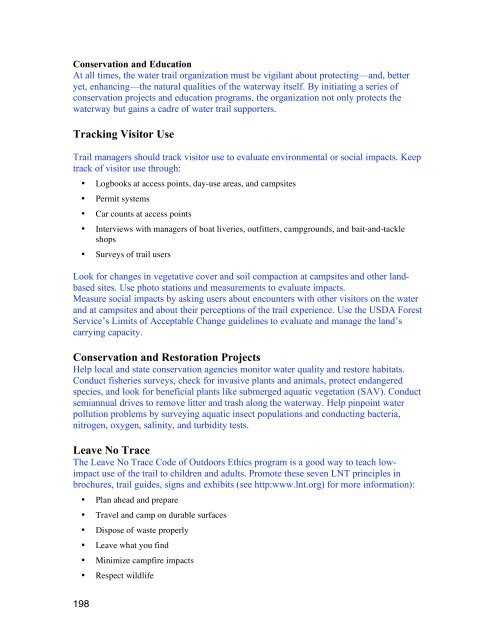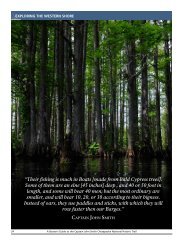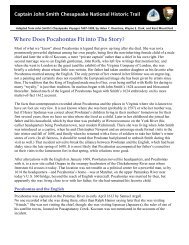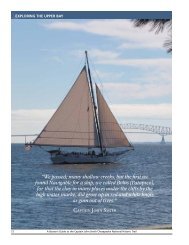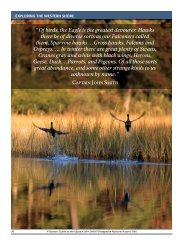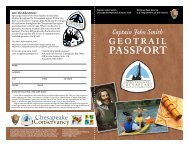Draft Interpretive Plan Join the adventure! - Captain John Smith ...
Draft Interpretive Plan Join the adventure! - Captain John Smith ...
Draft Interpretive Plan Join the adventure! - Captain John Smith ...
You also want an ePaper? Increase the reach of your titles
YUMPU automatically turns print PDFs into web optimized ePapers that Google loves.
Conservation and Education<br />
At all times, <strong>the</strong> water trail organization must be vigilant about protecting—and, better<br />
yet, enhancing—<strong>the</strong> natural qualities of <strong>the</strong> waterway itself. By initiating a series of<br />
conservation projects and education programs, <strong>the</strong> organization not only protects <strong>the</strong><br />
waterway but gains a cadre of water trail supporters.<br />
Tracking Visitor Use<br />
Trail managers should track visitor use to evaluate environmental or social impacts. Keep<br />
track of visitor use through:<br />
• Logbooks at access points, day-use areas, and campsites<br />
• Permit systems<br />
• Car counts at access points<br />
• Interviews with managers of boat liveries, outfitters, campgrounds, and bait-and-tackle<br />
shops<br />
• Surveys of trail users<br />
Look for changes in vegetative cover and soil compaction at campsites and o<strong>the</strong>r landbased<br />
sites. Use photo stations and measurements to evaluate impacts.<br />
Measure social impacts by asking users about encounters with o<strong>the</strong>r visitors on <strong>the</strong> water<br />
and at campsites and about <strong>the</strong>ir perceptions of <strong>the</strong> trail experience. Use <strong>the</strong> USDA Forest<br />
Service’s Limits of Acceptable Change guidelines to evaluate and manage <strong>the</strong> land’s<br />
carrying capacity.<br />
Conservation and Restoration Projects<br />
Help local and state conservation agencies monitor water quality and restore habitats.<br />
Conduct fisheries surveys, check for invasive plants and animals, protect endangered<br />
species, and look for beneficial plants like submerged aquatic vegetation (SAV). Conduct<br />
semiannual drives to remove litter and trash along <strong>the</strong> waterway. Help pinpoint water<br />
pollution problems by surveying aquatic insect populations and conducting bacteria,<br />
nitrogen, oxygen, salinity, and turbidity tests.<br />
Leave No Trace<br />
The Leave No Trace Code of Outdoors Ethics program is a good way to teach lowimpact<br />
use of <strong>the</strong> trail to children and adults. Promote <strong>the</strong>se seven LNT principles in<br />
brochures, trail guides, signs and exhibits (see http:www.lnt.org) for more information):<br />
• <strong>Plan</strong> ahead and prepare<br />
• Travel and camp on durable surfaces<br />
• Dispose of waste properly<br />
• Leave what you find<br />
• Minimize campfire impacts<br />
• Respect wildlife<br />
198


